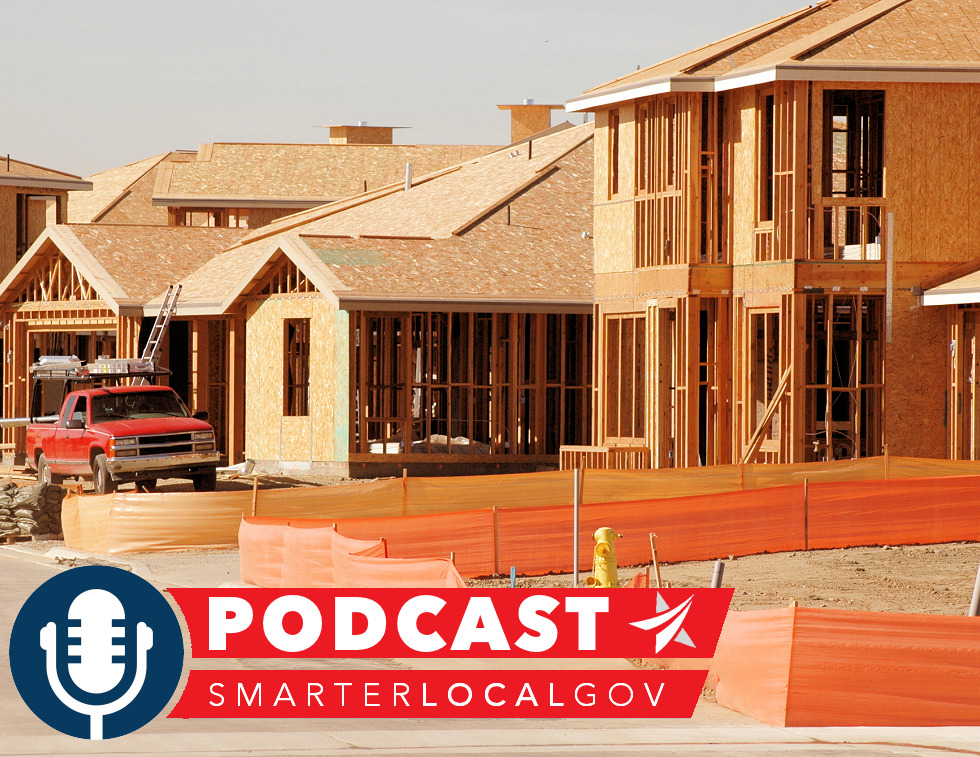Why Housing is Economic Development
In this Episode of Building Stronger Communities, SmarterLocalGov team members Michael N’Dolo and Matt Horn discuss the role housing plays in your community’s economic development potential. Available housing can impact your community’s growth in significant ways.
It’s tough to talk about economic development without talking about housing. As economic developers have zeroed in on workforce development and talent attraction as a top factor for industry growth, the question becomes: Does your community have the housing needed to accommodate its current and future workforce and their families?
The vast majority of communities in the U.S., while potentially economically tied to major cities, are essentially rural in nature. These areas tend to have a disproportionate concentration of older homes (read: high energy and upkeep costs) and may lack housing products suitable to a diverse population, including first-time homebuying younger families and older residents seeking to age within their communities.
Given low interest rates and low unemployment, many cities, towns, and villages are experiencing a tight housing market. At the same time, high building costs and scant construction activity can mean low inventory, low vacancy, and upward pressure on housing prices. Another challenge: Many lower-income housing complexes that were built with government subsidies are aging out of their required affordability protections, and families just above lower-income thresholds (which may include employees of local manufacturers) are often cost-burdened when purchasing or renting market-rate housing. This can feed blight and disinvestment and a range of social and economic consequences resulting from housing insecurity.
Communities can take a number of steps to be proactive in influencing needed housing development, for example:
- Develop a comprehensive understanding of your housing stock and housing market, as well as the economic and demographic trends that will shape its future.
- Leverage a housing study and gap analysis to pursue federal and state resources for housing construction and related programs, for example those administered by USDA, HUD, and the New York State Office of Housing & Community Renewal.
- Ensure that housing is adequately addressed in your comprehensive plan and that zoning and development regulations are reflective of your housing goals.
- Activate incentives at local level: Adopt and promote the use of relevant incentives to support multi-family and mixed-use development; and develop incentive programs for homebuyers who are currently working in your community, but do not reside there.
- Encourage property owners to activate upper-story residential units in downtown buildings (many states have grants to support this).
- Maintain dialogue with developers (both for-profit and not-for profit), offering clear information about the housing products you need and identifying sites that have necessary utilities, zoning, and community support.
- Leverage your area’s land bank to identify, acquire, and mitigate issues in blighted and deteriorating housing and to develop new low-cost homes.
- Partner with a community-based not-for-profit to preserve affordable units by providing owners with technical assistance required to update buildings.
- Comprehensively and regularly promote regional programs that help residents with the cost of home renovation, weatherization, and accessibility improvements, as well as with legal counsel and assistance to prevent foreclosure.
- Explore co-living and other alternative housing models that reduce rent and maintenance responsibilities, while increasing socialization, health, and safety for seniors.
Housing is a key factor in a community’s quality of life, and blight or inadequate housing has direct implications for communities’ revenue and ability to maintain excellence in service delivery. It pays to be mindful and strategic about combating deterioration of older homes, increasing housing choice, ensuring that your workers can afford to live in your community, and to align local policy frameworks to address your housing objectives.

